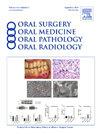Diagnostic performance of dental artificial intelligence (AI) platform for caries detection and its potential role in dental education
IF 2
3区 医学
Q2 DENTISTRY, ORAL SURGERY & MEDICINE
Oral Surgery Oral Medicine Oral Pathology Oral Radiology
Pub Date : 2025-02-04
DOI:10.1016/j.oooo.2024.11.060
引用次数: 0
Abstract
Teaching and evaluating caries detection skills in dental education can be a time-consuming process that requires careful case selection and faculty calibration. We have developed an online caries detection competency assessment that evaluates students' ability to detect caries. The assessment involves scoring radiographs by a panel of 5 UCLA faculty members, with the consensus score considered the correct answer. This study examined the use of the Second Opinion® dental artificial intelligence (AI) platform for caries diagnosis and its potential to enhance student detection skills without faculty intervention.
The caries detection examination included 47 tooth surfaces, encompassing both proximal and occlusal surfaces. Radiographs were assessed using the AI platform to determine its diagnostic accuracy compared to the faculty consensus score. Student performance on the competency exam was also measured and compared with the AI platform.
The AI platform exhibited successful caries detection for interproximal surfaces, although it showed limitations in detecting occlusal caries. Of the 19 carious lesions, the platform correctly identified 17, with 1 false positive and 2 false negatives. The platform accurately identified the absence of caries in 27 out of 28 non-carious lesions, resulting in a sensitivity of 89% and a specificity of 96%. Overall, the AI platform correctly scored 44 of the 47 surfaces. In contrast, only 24 of the 47 surfaces were correctly scored by 100% of the students (P < .001). The AI platform provided accurate diagnoses for 21 of the 23 surfaces that some students scored incorrectly. Interestingly, the 3 surfaces incorrectly scored by the AI platform were correctly identified by more than 90% of the students.
The Second Opinion® dental AI platform holds promise as an effective educational tool, particularly for diagnosing interproximal caries. The platform has the potential to guide accurate diagnoses and improve student performance in caries detection.
求助全文
约1分钟内获得全文
求助全文
来源期刊

Oral Surgery Oral Medicine Oral Pathology Oral Radiology
DENTISTRY, ORAL SURGERY & MEDICINE-
CiteScore
3.80
自引率
6.90%
发文量
1217
审稿时长
2-4 weeks
期刊介绍:
Oral Surgery, Oral Medicine, Oral Pathology and Oral Radiology is required reading for anyone in the fields of oral surgery, oral medicine, oral pathology, oral radiology or advanced general practice dentistry. It is the only major dental journal that provides a practical and complete overview of the medical and surgical techniques of dental practice in four areas. Topics covered include such current issues as dental implants, treatment of HIV-infected patients, and evaluation and treatment of TMJ disorders. The official publication for nine societies, the Journal is recommended for initial purchase in the Brandon Hill study, Selected List of Books and Journals for the Small Medical Library.
 求助内容:
求助内容: 应助结果提醒方式:
应助结果提醒方式:


